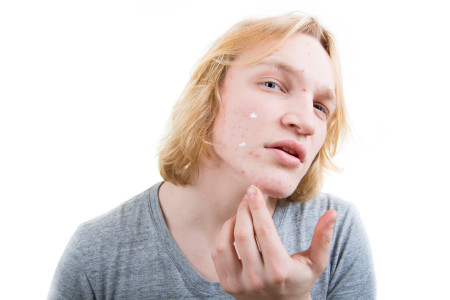HOW TO APPLY TOPICAL ACNE MEDICATION
Today, there are many effective treatments for acne. To get the greatest benefit from topical acne medications, follow these tips from board-certified dermatologists.
Do you continue to break out despite having tried several acne treatments? Are you convinced that nothing’s going to work, but given time, the acne will clear on its own?
You don’t have to wait. With the right treatment and skin care, virtually everyone can see clearer skin.
Here’s what you can expect when you see a board-certified dermatologist.
Treatment prevents scarring
Treating acne effectively when you first get it can prevent years of breakouts and possible scarring.

How do dermatologists diagnose acne?
If you have acne, a dermatologist can diagnose you by looking at your breakouts. During your appointment, a dermatologist will also note what types of acne you have and where the breakouts appear on your skin. This helps your dermatologist create an effective treatment plan.
Sometimes what looks like acne isn’t acne. While rare, what looks like acne can be another condition. For example, some people mistake hidradenitis suppurativa, also called acne inversa, for everyday acne. Treatment for this condition differs from that for acne.
Another condition that can be mistaken for acne is perioral dermatitis. It often causes breakouts that look like acne around the mouth.
Seeing a board-certified dermatologist can be reassuring. Whether you have stubborn acne or another condition, a board-certified dermatologist can diagnose you and create a treatment plan tailored to your needs.
How do dermatologists treat acne?
The acne treatment plan that’s right for you depends on many considerations, including:
-
What type of acne (i.e., blackheads, pimples, etc.) you have
-
Where the acne appears on your skin
-
What treatments you’ve already tried
-
When the breakouts started
-
Your age
-
Whether the acne has left you with dark spots or scars
While a treatment plan can vary from one patient to the next, even for 2 patients who have the same type of acne, treatment often follows these guidelines.
Whiteheads, blackheads, or both: If you have these breakouts, you’ll likely apply acne medication to your skin. Your treatment plan may include one of the following:
-
A retinoid
-
A retinoid + benzoyl peroxide, azelaic acid, or salicylic acid
-
Benzoyl peroxide + an antibiotic you apply to your skin
Pimples: Mild or moderate pimples can be treated with medication you apply to your skin. Treatment will often consist of applying one of the following:
-
Benzoyl peroxide
-
A Retinoid
-
Azelaic acid
-
Benzoyl peroxide + a retinoid or an antibiotic you apply to your skin
Women who continue to get breakouts may need medication, such as a birth control pill that the U.S. Food and Drug Administration (FDA) has approved to treat acne. The birth control patch may also be effective, as can some other medications.
You’ll find more information about stubborn acne that women can develop at: Stubborn acne? Hormonal therapy may help
Acne nodules and cysts: If you have deep, painful acne that often leaves a permanent acne scar, effective treatment can help you see clearer skin and prevent new scars.
Treatment may consist of:
-
Prescription medication that you apply to your skin + taking an antibiotic
Sometimes acne needs extra help
To help you get the best possible results from treatment, your dermatologist may also recommend adding one of the following to your treatment plan.
Laser or light therapy: Studies show that laser and light devices can help to clear acne. This type of treatment works best when combined with other acne treatment. Learn more: Lasers and lights: How well do they treat acne?
A corticosteroid injection: If you have a large, extremely painful and deep acne breakout, a dermatologist can inject it with a corticosteroid. This can rapidly relieve the pain and the size of the breakout. While effective, this treatment is reserved for treating a few severe acne breakouts. Using it more than a few times can cause side effects.
A healthy diet: Some studies suggest that what you eat can also help to give you clearer skin. If you think that what you’re eating could be causing breakouts, be sure to find out what the research shows. Learn more: Can the right diet get rid of acne?
Treatment changes once you get results
Follow treatment plan
To get the best results, follow your dermatologist’s treatment plan exactly as prescribed. If you have trouble following the plan, tell your dermatologist.

Once you get the results you want, follow-up appointments with your dermatologist may seem unnecessary. You want to keep those appointments. Without treatment, many people see breakouts for years. To prevent this, your dermatologist will give you a different treatment plan.
This treatment plan often involves applying a medication that contains a few different acne treatments, such as benzoyl peroxide and a retinoid, to acne-prone skin. Often, you can apply this every other day.
Acne friendly skin care helps you get the best results
Skin care is so important that without it you may not get the results you want. Even if you follow apply your acne treatment perfectly, new breakouts can appear if you’re too rough on your skin.
You need gentle skin care to clear acne. If you’re scrubbing your face clean or washing it several times a day, you’re irritating your skin. Any time you irritate acne-prone skin, it can lead to breakouts.



0 Comments